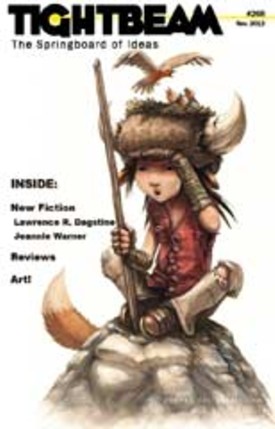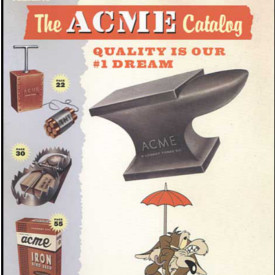
So, as I was reading today’s newspaper I was presented with two headline choices, to either read about the international spying-on-our-friends scandal, or the Obamacare toss-Sebelius-under-the-bus website debacle. Some choice I thought to myself nodding sagely…seems just like business as usual. That old cliché about the more things change the more they remain the same started to hum in the back of my mind. Of course, this reminded me of another cliché, one of the most famous ones in all of science fiction and fantasy fandom, the one pertaining to a “sense of wonder.”
When do we loose our sense of wonder? Why is it so important? How come it has become embarrassing to admit to having one, or wanting one, or even seeking one?
Once upon a time, in the ancient, pre-historic roots of fandom, way back in my grandfathers time, and before, when H.G. Wells and Jules Verne kicked the whole thing off, way back in 1926 when Hugo Gernsback started codifying the whole thing inside the pages of his magazine, <i>Amazing Stories</i>, a sense of wonder was still a good thing, even a great thing…much sought after by writers, readers, and fans alike.
It was sometime directly after World War II, before the start of the Korean War, when science fiction writer Rog Phillips began the original fan column, The Club House, in <i>Amazing</i>, that a “sense of wonder” became a thing of derision, of ridicule, and of secret (and public) amusement when even merely mentioned.
Reading through all those original fan columns, and in doing the research on them while seeking a context for those now nearly forgotten times, and the nearly as completely forgotten people who participated in them (those of my parents generation), it finally dawned on me why the sense of wonder became a much abused cliché.
The pre- and post-WWII generation were the wunderkind. They were young when they entered into fandom, into science fiction and fantasy. For instance there was a 23-year-old Orson Welles shocking the nation 75 years ago back on October 30<sup>th</sup>, 1938 with his panic-inducing radio broadcast of H.G. Wells <i>The War of the Worlds</i>. And Don Wollheim, then a self-professed Communist, was also another 23-year-old wunderkind when he formed FAPA, the oldest amateur press association in science fiction fandom.
July 1937 saw the first mailing of the Fantasy Amateur Press Association (FAPA). Those were heady times. Many of the most famous clichés in fandom were derived from FAPA mailings, from inside the printed fanzines of the various members. There was noted FAPAn Charles Burbee. Among his many claims to early fandom fame, the most noteworthy was his counter-crack, “Fandom is just a goddamn hobby (FIJAGH)” in response to the tongue-in-cheek article written by D.B. Thompson for FAPA in 1943, “Fandom as a way of life,” which became “Fandom <b>is</b> a way of life” and the clarion call for those who thought that Fandom <i>was</i> a serious business.
Everyone who was anyone, or wanted to be, seemed to join FAPA. There was a waiting list to join. But FAPA wasn’t without its flaps. In March 1945 noted fan scholar A. Langley Searles while taking his turn as OE (the editor in charge of the group mailings) threatened to turn objectionable FAPA material that contained images typically involved in sexual themes (overtly or by innuendo) over to the Post Office authorities. FAPAns resented this to the point of making the organization too hot to hold him. It always seems that when an aggregate of individuals forms, some one or some group wants to exert their own unique type of control over them.
By 1949 FAPA was in full swing, over a decade old, and still a waiting list to join. Some fanzine editors couldn’t resist the opportunity to show that they were the smartest kids in the room. Like there was the time Sam Martinez invented the hoax-identity of William Clyde for his FAPAzine, <i>Shadowland</i>. William was responsible for a number of ribald stories and sexy drawings in FAPA before one of his publications, proving too raw to go through the mails, was banned, causing him to be dropped from FAPA for inactivity. Clyde survived possible exposure at a Tulsa con when Sam told the attendees that William was a teenager and his mother had made him stay home—and they believed him.
Another teenager (a very real one), a 14-year-old Robert Silverberg, new to fandom, wrote about starting his own version of FAPA in his fanzine, <i>Spaceship,</i> way back in 1949. The Junior Amateur Fantasy (or Press) Association, JAFA or JAPA, never got off the ground before Silverberg joined FAPA instead. In 2007, Silverberg was elected president (OE) of FAPA.
The long waiting list to join, coupled with the even longer wait, brought about the formation of the Spectator Amateur Press Society (SAPS), the second oldest of the principally fannish APAs. Founded in 1947, its membership limit has varied over the years (occasionally as high as 40) but is currently (2013) restricted to 25. Its activity requirements (6 pages on entry and 6 every 6 months thereafter) are more stringent than those of FAPA, the oldest fannish APA.
Back when FAPA (and SAPS) were still new, and the members still golden in their youth and eagerness, still trying to find that illusive sense of wonder, being a member was fun! Charles Burbee’s OEship of FAPA in 1961-62 was marked by collating parties where the OE played cards in the kitchen while the other FAPA members published the official FAPAzine <i>Fantasy Amateur</i>, and the waiting-listers put together the mailing. When it was ready to be sent out the OE would reappear and place his imprimatur on the job. The monstrous 100<sup>th</sup> mailing of FAPA, when bagged and ready to mail, was assembled into a throne for Burb to sit on and officially peruse a copy.
Everyone got into the act, even a very young teenage Ted White: “In August of 1953 I put out my own fanzine. It was called <i>Zip</i>, it was 4” x 6” in size, and its contents were rather undistinguished: the product of a non-precocious fifteen-year-old.”—Ted White, <i>Science-Fiction Five Yearly</i> #6.
Issue #7 of <i>Zip</i>, the last one, was Ted White’s first FAPA contribution. Ted would go on to become one of the many editors for <i>Amazing Stories</i> (Oct. 1968 to Oct. 1978) over thirty-five years ago.
Good times! Where did they all go?
It seems we have our answer. The young pre- and post-WWII generation, those wunderkind who formed and participated in the early versions of FAPA and SAPS decided that fandom <i>was</i> a serious business, not just a hobby. Those young teenagers, who started out having fun, having a sense of wonder, who wore their Propeller Beanies with pride, and carried their Zap-Zap Ray Guns with panache, became involved in the serious business of fandom and related activities. They made money in this genre, and as they all became adults, they lost their sense of wonder, replacing it with the pursuit of the dollar.
Not only did they grow up in fandom, they also grew up, becoming too “old” to have a sense of wonder. Thus out of necessity “a sense of wonder” had to become a much-deprecated cliché. Not only did they become “too” adult to play around anymore, after all fandom <i>is</i> a serious business, they held onto the cherished institutions that they formed for too long, unable or unwilling to hand them over to the next generation, or the generation after that one.
And I know beyond the shadow of any doubt that this conclusion is true. I am currently a member of both SAPS and FAPA, part of the only father-son duo to ever participate in both amateur press associations. By <span style=”text-decoration: underline;”>my</span> count (sigh!) SAPS is down to less than ten regularly active members. And by <span style=”text-decoration: underline;”>my</span> count FAPA is down to 20 regularly active members. Neither has a waiting list to join anymore….
…how could that be if my conclusions are wrong? Who wants to join? No one it seems, as attrition due to age mounts and the number of members constantly declines. Why not? The day of the printed fanzine is fading, but not entirely. Many award-winning printed fanzines are still being edited, just not as a part of SAPS or FAPA.
I didn’t join them to become the last man standing. I joined in order to ensure that these organizations will endure.
So, what is my point? This is where I illustrate my point further with the fanzine reviews for this week, because there is a positive solution to this problem. There is still hope, by firmly placing our faith, our institutions, and our clubs in the hands of the next generation. We must actively participate in this handover, and not just let attrition run its course, and the inevitable happen. If we actively participate we will make this new fandom about us and them, instead of just keeping our old fandom all about us. Together we can GIFT this next generation with better memories of us, and not leave them just our fading words in dusty fanzines or digital ones in fleeting electrons.
***

Timing is everything. One of the ezines up for review in this column for this week is Fanstuff (October 2013. Irregular, but was weekly. 18-pages) as edited by Arnie Katz. Now I know Arnie, and have for years. He never fails to deliver. Arnie is one of the premiere serious fan historians of our day, but he has still managed to hold onto a sliver of his original sense of wonder.
It is this sliver that is the focus of Arnie’s current zine as he discusses yet another of the dreadful clichés of our current fandom, GAFIA (Getting Away From It All)…that is…to leave fandom. In “A Closer Look at GAFIA” Arnie discusses “its cause, cure and prevention.” Arnie is much better delivering an in-depth overview of its symptoms, the root causes as it were for leaving fandom, then in delivering a cure or prevention.
I disagree with Arnie about his definitions of a cure. At heart is another cliché, the primary one under discussion…a sense of wonder. Leaving fandom comes from a loss of this sense of wonder. One may still remain inside fandom, but only if it (a sense of wonder) is replaced with a more mercenary motive, like the thirst for that most elusive of all elixirs, the unsustaining egoboo, or for a quest for monetary gain.
So, how does one generation, a generation that has held onto fandom for decades, while coming and going (GAFIATing) repeatedly regain a sense of wonder?
It is high time that this passing generation reach out, find the next generation, and mentor them…bring them into fandom! It is time for us, those who formed these institutions and participated in them, to think of our lasting legacy. Certainly there will always be a fandom, just not ours as we would understand it, if we do nothing. Fandom will be reformed when we are all gone, without our input.
We must, for the sake of our legacy, for the continuation of our organizations, our way of life, bring the next generation into the fold. We must Get Into Fandom Today with this younger generation, and instill them with our once misplaced, but now found, sense of wonder. We must GIFT them our sense of wonder before it is too late.
Read Arnie’s zine. Decide for yourself. Why are you in fandom? How will you be remembered? Who will remember what you did?
This is Arnie’s GAFIA issue. It also contains: “GAFIA and Me”; “The GAFIA Company”; and “Fantastic Adventures.” These last two pieces are true fan fiction, something that is becoming a rarity. This reader thought that “The GAFIA Company” was the better of these two pieces.
***

Drink Tank #359: October 2013. Weekly. 28-pages. Edited by Chris Garcia. Chris tells us in his introduction that it is his birthday. (Happy Birthday, Chris!) So he decided to test the limits of Facebook and Twitter by asking various amusing questions, nothing at all serious as he puts it. Chris kicks off by asking: “You are a Robot. What were you designed to do? Also, what are your fighting abilities?” The responses are a hoot. Read them for yourself for a quick laugh. Next comes: “Pitch Me Your Best Movie Idea. DO IT NOW!” Hhhmmm! Pick your favorite answer. Chris continues with: “What Is Your Personal Theory For What Killed The Dinosaurs?” My favorite…someone blamed their demise on Obamacare. Now that’s a stretch. Next: “What Is The Name of Your Mexian [sic] Folded Sandwich Shop and What is Your Signature Taco?” The zinger from Peter Sullivan resonated: “Taco Chance On Me—an ABBA-themed taco shop.” This is followed with the next question: “What Non-Extant Tumblr Do You Wish Existed?” Chris continues in the same “vain” with: “What Artist Should Be the One to Immortalize the #GarciaAdministration in the National Portrait Gallery?” Lots of great photo-shopped art accompanies the answers. “Tell Me A Story Where the Bad Guy Wins” has this zinger from Jason Wiener at the top of the list of answers: “Once upon a time there was a guy who forced everybody to entertain him on Facebook for his Birthday. And they did. The end.” Next the endless wit of Chris comes up with: “What Should the Motto Be For My New Dwarven Army?” Pick your own, there’s lot to choose from. My favorite was from Kory Doyle: “Life is short, and so are we!” Chris continues with: “What Mythical Creature Are You?” Once again Jason Wiener zings with: “I’m the mythical Chris Garcia Twin.” With friends like this, who needs…. Chris continues to test his imagination and the wit of his pals with: “What Historical Figure Would You Dress Me Up As? (Note: Batman is NOT a Historical Figure.)” Gee! I’m certain the myriad denizens of Gotham will disagree. The accompanying artwork is priceless. Chris had a lot of fun with this zine. Once again he delivers.
***

Tightbeam #268: November 2013. Monthly. 28-pages. Edited by David Speakman. Cover art: “Watcher,” by David Revoy. This zine is the OO (official organ) for the NFFF (the National Fantasy Fan Federation). Formed in 1941, the NFFF is the longest-running national fan organization for science fiction, fantasy, and supernatural horror fans. You can find out more about this club at: <span style=”color: #0000ff;”><span style=”text-decoration: underline;”><a href=”https://www.n3f.org/”>n3f.org</a></span></span>
The NFFF has re-launched <i>Tightbeam</i> as a genzine. <i>Tightbeam</i>’s previous life was that of a letterzine—but the Internet and email pretty much wiped out the need for letterzines, so it lived as a letter column in <i>TNFF</i> for more than a decade until it was resurrected as a genzine with a focus on fan art, fan writing, and fan tips/reviews. Issues in the new format, beginning at #264, keep the numbering intact since <i>Tightbeam</i>’s launch in 1960 by Walter Coslet, Art Hayes, and Marion Zimmer Bradley.
As a genzine <i>Tightbeam</i> has the look of a professional science fiction magazine. So much great stuff, and all free. What more could anyone ask for? After the “Editor’s Notes” comes “N3Forum (LoCs)” Complete with another response from the ubiquitous Lloyd Penney. Lloyd is always interesting to read, his comments pithy at times, but always right on and informative. This zine gives with some fan fiction too: “Starship Hanoi,” by Lawrence R. Dagstine, a space-based reflection of humanity and what parts of our culture that inertia will drag along as we travel beyond our homeworld and into the stars. “RE: The Review Section” follows with a fairly long list of books and movies reviewed. Here’s a tip for Independent publishers, the NFFF is a very large group of fans, with a storied history. They are especially interested in receiving new books to consider for review. Send them to: Heath Row, P.O. Box 372, Culver City, CA 90232; <span style=”color: #0000ff;”><span style=”text-decoration: underline;”><a href=”mailto:kalel@well.com”>kalel@well.com</a></span></span>. Next comes another piece of original fan fiction: “The Dark Between the Stars,” by Jeannie Warner, a reflective piece on how breaking terrestrial bonds affects an individual’s sense of place in the universe. Not listed in the Table of Contents, but found buried within the copy is “2013 N3F Amateur Short Story Contest Submission Rules.” Here’s your shot, to see if your fiction measures up. Why not send in a submission? There’s a cash prize for winners. Read this zine for the rules. Long time science fiction writer and wunderkind, Jefferson Swycaffer is conducting the contest. And if you get hooked on this zine, there’s a page dedicated to joining and becoming a new NFFF club member. Finally, and not least comes the Comic section with: “xkcd,” by Randall Munroe. I was pleased with this comic strip, it was both amusing, and sadly disturbing. I hope to see more of Randall’s work.
***
Well, here we are once again, at the end of another column. We’ve traveled from one cliché (needing a sense of wonder) to another (GIFTing another generation with our institutions and clubs). At anytime you want, you can hop on board and Get Into Fandom Today. Join N3f. Submit a story. Win a prize. Write your own fanzine. Form your own club or amateur press association. It’s all possible. All you need is a sense of wonder to sustain you along the way.










